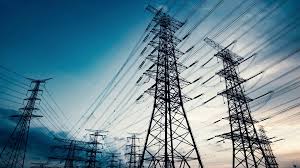
Breaking News
 President Ibrahim Traoré's Bold Speech to the IMF Shocks the West (Publisher Recommended)
President Ibrahim Traoré's Bold Speech to the IMF Shocks the West (Publisher Recommended)
 America Descends Into CHAOS - Are You Prepared?
America Descends Into CHAOS - Are You Prepared?
 Minnesota Shooter's Wife Detained with Weapon, Ammunition, Cash, Passports
Minnesota Shooter's Wife Detained with Weapon, Ammunition, Cash, Passports
 DARPA sets new records for sending power wirelessly
DARPA sets new records for sending power wirelessly
Top Tech News
 "We're Not Ready for AI Simulation" | Official Preview
"We're Not Ready for AI Simulation" | Official Preview
 $839 Ecoworthy Version 3: Best Value 48V Battery for 2025?
$839 Ecoworthy Version 3: Best Value 48V Battery for 2025?
 Feature-packed portable learning lab for makers puts AI within reach
Feature-packed portable learning lab for makers puts AI within reach
 Hydrogen Gas Blend Will Reduce Power Plant's Emissions by 75% - as it Helps Power 6 States
Hydrogen Gas Blend Will Reduce Power Plant's Emissions by 75% - as it Helps Power 6 States
 The Rise & Fall of Dome Houses: Buckminster Fuller's Geodesic Domes & Dymaxion
The Rise & Fall of Dome Houses: Buckminster Fuller's Geodesic Domes & Dymaxion
 New AI data centers will use the same electricity as 2 million homes
New AI data centers will use the same electricity as 2 million homes
 Is All of This Self-Monitoring Making Us Paranoid?
Is All of This Self-Monitoring Making Us Paranoid?
 Cavorite X7 makes history with first fan-in-wing transition flight
Cavorite X7 makes history with first fan-in-wing transition flight
 Laser-powered fusion experiment more than doubles its power output
Laser-powered fusion experiment more than doubles its power output
Making The Power Grid Great Again

It's a costly mandate, resting on shaky legal and technical foundations. Americans would be fortunate to have it repealed.
President Biden issued his Clean Power Plan 2.0 after the Supreme Court ruled in West Virginia v. Environmental Protection Agency that President Obama's Clean Power Plan 1.0 exceeded the Environmental Protection Agency's (EPA) statutory authority. The Court's 2022 decision concluded that the EPA had overstepped by attempting to reshape the nation's energy grid without clear congressional approval.
In a world where energy security and affordability are paramount, one might assume that when the Supreme Court strikes down a sweeping environmental regulation, the EPA would reconsider its approach. But in Washington, ideology often trumps reason, and undeterred, the Biden administration returned in 2024 with a sequel that EPA now proposes to end.
The Clean Power Plan 1.0 attempted to force states to overhaul their energy systems entirely, compelling them to adopt renewable energy and shutter fossil fuel plants, regardless of local needs or economic consequences.
Its successor, the Clean Power Plan 2.0, imposed an estimated $15 billion in regulatory costs over 20 years, and greater costs through increases in prices of electricity and slower economic growth. EPA argues "that GHG emissions from fossil fuel-fired power plants do not contribute significantly to dangerous air pollution."
Just as Chief Justice John Roberts warned in 2022 that the EPA had claimed "an unheralded power representing a transformative expansion of its regulatory authority," the EPA was trying to do through regulation with the Clean Power Plan 2.0 what Congress had repeatedly declined to do through legislation.
Fifteen years ago similar legislative proposals—the Waxman-Markey and Kerry-Lieberman bills—failed in the U.S. Congress even when Democrats held strong majorities. That should have signaled to regulators that such sweeping changes lacked democratic legitimacy.

 How are holograms possible?
How are holograms possible?


